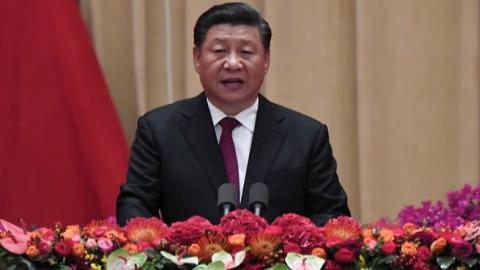The United States is in the midst of a 21st century cold war with China. A shockwave that started in Wuhan last December, when the novel coronavirus emerged, has since reverberated across the world, raising geopolitical stakes and touching off new world tensions.
Calls from elected officials around the country, including President Trump and Sen. Josh Hawley (R-Mo.), to punish China for its complicity in spreading the virus by having China pay reparations have been met with increasing bluster and intimidating actions from the communist country. It is difficult to see recent nuclear tests held in violation of the Nuclear Test Ban Treaty as little more than attempts to intimidate the United States against these actions. A columnist in the South China Morning Post meanwhile, an outlet based in the increasingly mainland-influenced Hong Kong, has openly warned that attempts by America to seek coronavirus pandemic damages from China “ might well trigger war. ”
Make no mistake, the United States must stand firm in the face of this bullying to ensure the Chinese are adequately punished for their complicity in spreading COVID-19. And as the temperature of this conflict likely heats up in the coming months and years, Washington must be sure that we are prepared to meet this challenge on all fronts.
The very system of globalization has been used by the Chinese Communist Party to advance its agenda. By slowly taking over the world’s trading system and monopolizing manufacturing, they have turned global supply chains into a national security liability. Repatriating American manufacturing and reshoring critical manufacturing capabilities such as pharmaceuticals, semiconductors and microelectronics would help to better secure industrial capabilities, and leave us better prepared to fight this new cold war.
We should make changes to our visa programs as well to stymie the efforts of the Chinese intelligence services. Student visas and employment verification scams have been used by Chinese nationals to recruit assets and pass sensitive defense and technological information back to Beijing. Revisions to the H1B and EB5 visa programs — two of the most frequently abused — to limit Chinese espionage and offer more opportunities to guest workers and investors from friendlier countries would be another positive policy change.
Also worth considering are investments in a secure, nationwide 5G network free of Huawei technology that would help catapult the United States into the next era of the information technology age. It would also protect American data from Chinese espionage and reduce the $300 billion to $600 billion in intellectual property losses suffered each year by Chinese theft.
Homeland missile defenses, meanwhile, a key component of what helped America win the Cold War with Russia, also must be bolstered to deter Chinese aggression. Yet, at this important time in geopolitical history, America’s missile defenses are at a critical crossroads.
For years the United States has been working on a new warhead for the Ground-Based Interceptor (GBI), the front line of our homeland missile defenses. The project, known as the Redesigned Kill Vehicle (RKV), was projected to reach initial capability in 2020 but budget cuts unfortunately caused the program to be cancelled last August. This has left a critical capability gap.
While the Trump administration has committed to investing in the Next Generation Interceptor (NGI) to advance our nation’s missile defense architecture, the system will not be active until at least 2026 and development could easily stretch into the 2030s. Given increasing tensions with China, we must find other ways to bolster our missile defenses in the meantime.
Funding for existing missile defense technology that is proven and highly tested could allow us to meet current challenges while investing in technologies to counter future threats. Systems such as Aegis ships and Aegis Ashore, as well as interceptors such as the Navy’s SM-3 and SM-6 missiles, are examples of existing technologies that can fill much-needed gaps in missile defense while the NGI is being fielded. Given recent Chinese missile advances, the alternative response — a decade of silence in response to these increasing threats — is unimaginable.
While those in power have been distracted by the COVID-19 crisis and other events around the world, China has been waging a multi-front war on America. Our economy, military, diplomacy and technology are all under attack, and the communist country is winning. If we don’t act soon, it may be too late to undo the shocking, though nearly invisible, victories the Chinese already have won. Taking steps now to ensure that America is able to stand up in the face of Chinese intimidation, and to reverse some of their ill-gotten gains, is the only way America can win this new cold war.
Read in The Hill



















